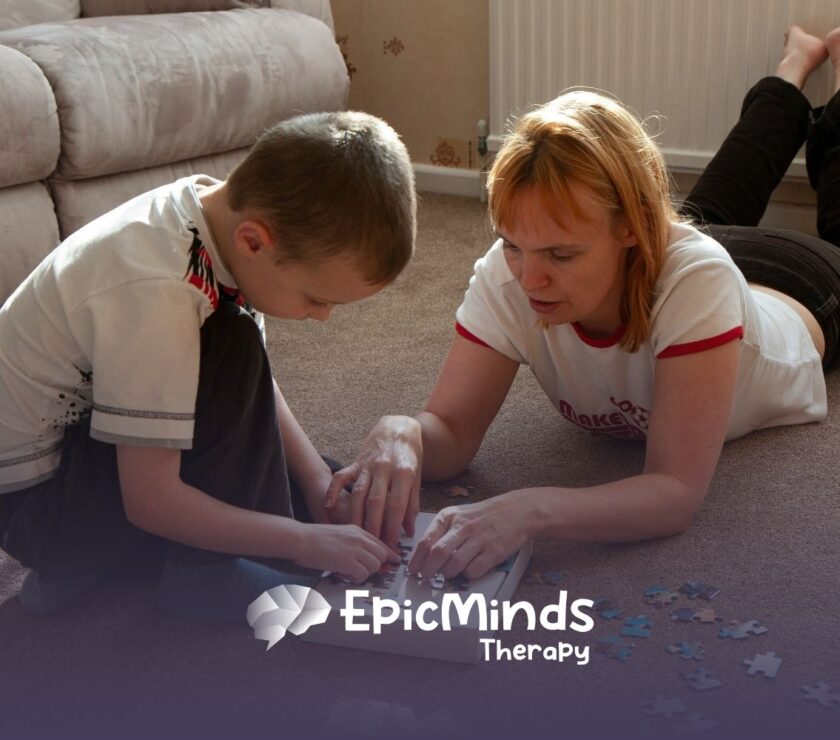Key Highlights
- Applied Behavior Analysis (ABA) therapy, known for treating Autism Spectrum Disorder (ASD), also benefits individuals with other developmental disorders.
- Insurance companies typically require a formal diagnosis of autism to approve coverage for ABA therapy, limiting universal access.
- Private payment options or specialized funding can allow access to services without a diagnosis.
- An official diagnostic process ensures targeted, effective treatment plans tailored to individual needs.
- Educational systems governed by the Individuals with Disabilities Education Act (IDEA) integrate ABA through Individualized Education Programs (IEPs).
- Diagnosis facilitates streamlined therapy access, resource allocation, and legal accommodations.
When families first hear about ABA therapy, their next question is often: “But what if my child hasn’t been diagnosed with autism?” It’s a fair question—and one we hear often. The reality is more nuanced than many expect.
I remember working with a family who came in desperate for support. Their son, James, wasn’t diagnosed but struggled with tantrums, limited communication, and difficulty in school.
They had hit wall after wall with insurance and school support. Through a private intake and careful planning, we helped them access in-home ABA therapy tailored to his needs—no diagnosis yet, but big changes ahead.
In this guide, we’ll explain the diagnostic process, how ABA is accessed, the role of insurance, and what alternatives exist if you’re navigating this without a diagnosis. By the end, you’ll have a clear understanding of how to move forward—diagnosis or not.
What is the Role of an Autism Diagnosis in ABA?
Why Diagnosis Matters
A formal autism diagnosis helps ABA professionals understand a child’s specific needs and challenges. It supports therapists in designing targeted goals—whether that’s improving communication, managing behaviors, or building daily living skills.
Diagnoses also open doors to tools, school supports, and insurance funding that are otherwise hard to access.
The Diagnostic Process Explained
In the U.S., autism is typically diagnosed by pediatricians, child psychologists, or developmental specialists. The evaluation involves interviews, observation, standardized tools, and parent input.
These evaluations follow DSM-5 criteria, focusing on communication issues and repetitive behaviors. This team-based approach ensures accuracy and leads to effective treatment planning.
Can You Get ABA Therapy Without an Autism Diagnosis?
Alternative Uses for ABA
Yes—ABA therapy can be used for various conditions, such as ADHD, intellectual disabilities, oppositional defiant disorder (ODD), or even behavioral challenges unrelated to any diagnosis. ABA focuses on encouraging positive behaviors and reducing harmful or unhelpful ones, making it flexible for many developmental needs.
When a Diagnosis Isn’t in Place
Accessing therapy without a diagnosis can be difficult. While some providers accept private payments, the cost is often high. Community programs or funding through developmental specialists may offer options. Still, without formal documentation, families may face limits when trying to access consistent support.
What Are the Challenges of No Diagnosis?
Barriers to Access
Without a diagnosis, getting ABA covered by insurance is a major hurdle. Most plans require proof of autism to authorize therapy. School services can also be limited unless a diagnosis qualifies a student for an Individualized Education Program (IEP). That means fewer accommodations and less structured support in learning environments.
Out-of-Pocket Costs
Some families choose to pay privately, but that isn’t feasible for everyone. Lack of coverage or documentation may also prevent access to state-funded resources, limiting long-term care options. A formal diagnosis often unlocks these supports, making it easier to build a reliable treatment plan.
How Do Insurance and Funding Work for ABA?
Insurance Requirements for Coverage
Most insurance providers only cover ABA therapy if there’s a formal autism diagnosis. This includes major carriers like Aetna, Blue Cross Blue Shield, and Cigna. Even developmental delays are often not enough for approval.
| Insurance Provider | Requirement for Coverage |
| Aetna | Formal autism diagnosis |
| Cigna | Developmental disability documentation |
| Blue Cross Blue Shield | Comprehensive diagnostic proof |
Before starting therapy, it’s essential to confirm eligibility directly with your insurance company. Each policy may differ, and approval processes can take time.
Other Ways to Cover the Cost
If insurance denies coverage, you still have options:
- Private pay: Directly pay providers, though this can be costly.
- Grants & scholarships: Offered by nonprofits or autism support organizations.
- Early intervention programs: Funded by local agencies for young children showing delays.
- Crowdfunding: Platforms like GoFundMe or support from community organizations.
Pediatricians and local advocacy groups can help you explore what’s available in your area.
What Does the Law Say About ABA in Education?
Understanding IDEA and IEPs
The Individuals with Disabilities Education Act (IDEA) ensures students with disabilities—including autism—receive services through IEPs. ABA techniques are often integrated into these plans to support learning and behavioral goals.
Without a diagnosis, getting an IEP can be harder, and children may miss out on needed school-based supports. However, advocacy from families and teachers can still help secure some accommodations.
Federal vs. State Rules
While federal law offers a framework, states expand on it. Some state laws provide ABA services for developmental disabilities beyond autism, but access varies. Special education advocates can help families navigate these regulations and make sure schools meet their obligations.
How Schools Use ABA to Support Students
The Role of IEPs in ABA Delivery
IEPs are designed to match a child’s educational needs and often include ABA strategies for communication, behavioral goals, or skill-building. Each plan is unique and should evolve with the student’s progress.
When a diagnosis is present, the IEP can focus on the most effective interventions. Parents and schools work together to monitor goals, track outcomes, and adjust supports as needed to help the child thrive both academically and socially.
Conclusion
While a formal autism diagnosis makes accessing ABA therapy and insurance coverage much easier, it’s not the only path. ABA therapy offers valuable tools for a wide range of challenges—not just autism.
Understanding the diagnostic process, funding options, and legal protections can help you find the best support for your child. Whether you’re starting the journey or exploring next steps, there are resources out there to help.
At Epic Minds Therapy, we believe every child deserves access to high-quality, compassionate care—whether or not they have a formal diagnosis. If you’re unsure where to start or feel stuck in the process, our team is here to guide you.
Reach out to Epic Minds Therapy to talk with one of our ABA specialists. Let’s explore how we can support your child’s growth and success—together.
Frequently Asked Questions
Can a child receive ABA therapy without an autism diagnosis?
Yes. ABA can be helpful for developmental or behavioral challenges like ADHD or learning delays. However, without a diagnosis, you may need to pay privately or seek community-based programs.
Will insurance cover ABA therapy if my child doesn’t have an autism diagnosis?
Most insurance providers require a formal diagnosis of autism to approve ABA therapy. Check with your provider to confirm your options and explore alternatives like scholarships or early intervention funding.
Are there conditions besides autism that ABA helps?
ABA techniques can benefit individuals with ADHD, ODD, intellectual disabilities, and other behavioral concerns. The therapy is flexible and tailored to individual goals.
How do I start the process if I suspect my child needs ABA?
Begin by speaking with a pediatrician or child psychologist. They can conduct developmental screenings and refer you to a diagnostic specialist or ABA provider based on your child’s needs.
What can I do if insurance denies ABA coverage?
If denied, consider private pay options, explore grants or scholarships, check local early intervention services, and talk to your school district about what support may be available through education-based programs.
Sources:
- https://www.cdc.gov/autism/hcp/diagnosis/index.html
- https://www.cdc.gov/autism/hcp/diagnosis/index.html
- https://www.autismspeaks.org/autism-diagnostic-criteria-dsm-5
- https://pmc.ncbi.nlm.nih.gov/articles/PMC8702444/
- https://pmc.ncbi.nlm.nih.gov/articles/PMC9458805/
- https://www.frontiersin.org/journals/psychiatry/articles/10.3389/fpsyt.2023.1093252/full
- https://eurjmedres.biomedcentral.com/articles/10.1186/s40001-024-01916-2




